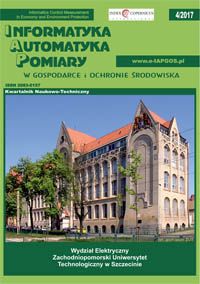Berlin Database of Emotional Speech: http://www.expressive-speech.net/ (10.08.2014).
Bracewell R.: The Fourier Transform and its Application. Electric Engineering Series. McGraw-Hill International Editions. Singapore 2000.
Chena K.F., Lib Y.F.: Combining the Hanning windowed interpolated FFT in both directions. Computer Phisics Communication 178(12)/2008, 924–928.
Chmaj T., Lankosz M.: Akwizycja i przetwarzanie sygnałów cyfrowych. Politechnika Krakowska, Kraków 2011.
Database of Polish Emotional Speech: http://www.eletel.p.lodz.pl/bronakowski/med_catalog/ (10.08.2014).
Gałka J., Ziółko B.: Study of Performance Evaluation Methods for Non-Uniform Speech Segmentation, International of Circuits. Systems and Signal Processing. NAUN 2008.
Harris R, Fredric J.: On the use of Windows for Harmonic Analysis with the Discrete Fourier Transform. Proceedings of the IEEE 66(1)/1978, 51–83.
Heinzel, G., Rüdiger, A., Schilling R.: Spectrum and spectral density estimation by the Discrete Fourier transform (DFT), including a comprehensive list of window functions and some new flat-top windows (Technical report).Max Planck Institute (MPI) für Gravitationsphysik/Laser Interferometry & Gravitational Wave Astronomy.
Janicki A., Turkot M.: Rozpoznawanie stanu emocjonalnego mówcy z wykorzystaniem maszyny wektorów wspierających. KSTiT 2008, Bydgoszcz 2008.
Kamińska D., Pelikant A.: Zastosowanie multimedialnej klasyfikacji w rozpoznawaniu stanów emocjonalnych na podstawie mowy spontanicznej. IAPGOŚ 3/2012, 36–39.
Kim E.H., Hyu K.H., Kim S.H., Kwak Y.K.: Speech emotion recognition using eigen-FFT in clean and noisy environments. 16th IEEE International Conference on Robots and Human Interactive Communication, Jeju, Korea 2007.
Kłosiński R.: Materiały X Konferencji Naukowej SP 2014.
Konratowski E.: Czasowo-częstotliwościowa analiza drgań z wykorzystaniem metody overlapping. Logistyka 3/2014, 3104–3110.
Konratowski E.: Monitoring of the Multichannel Audio Signal, Computional collective intelligence. Technologies and Applications. Lecture Notes in Artifical Intelligence 6422, Springer Verlag, 298–306.
Krzyk P., Sułowicz M., Pragłowska–Ryłko N.: Zastosowanie IpDFT do diagnostyki silników asynchronicznych. Zeszyty Problemowe – Maszyny Elektryczne 3/2014, 293–300.
Lynch P.: The Dolph-Chebyshev window: A simple optimal filter. America Meteorological Society Journal of the Online 125/1997, 655–660.
Parsomphan S.: Use of Neural Network Classifier for Detecting Human Emotions via Speech Spectrogram. Procedings of the 3rd IIAE International Conference on Intelligence Systems and Image Processing. Japan 2015.
Pfitzinger H.R., Kaernbach C.: Amplitude and Amplitude Variation of Emotional Speech. Interspeech 2008, 1036–1039.
Powroźnik P., Czerwiński D: Effectiveness comparison on an artificial neural networks to identify Polish emotional speech. Przegląd Elektrotechniczny 07/2016, 45–48.
Powroźnik P.: Polish emotional speech recognition using artificial neural network. Advances is Science and Technology Research Journal 8(24)/2014, 24–27.
Ramakrishnan S.: Recognition of emotion from speech, A review. Speech Enhancement, Modeling and Recognition – Algorithms and Applications, March 2012.
Scherer K.: Vocal communication of emotions: A Review of Research Paradigms in Speech Communication 40/2003, 227–256.
Smith J. O.: Spectral Audio Signal Processing. W3K Publishing, 2011.
Thompson W. F., Balkwill L–L.: Decoding speech prosody in five languages. Semiotica 158/2006, 407–424.
Wicher A., Sęk A., Konieczny J.: Akustyczno-fonetyczne cechy mowy polskiej. Instytut Akustyki UAM Poznań, 2005.
Zieliński T. P., Cyfrowe przetwarzanie sygnałów. Od teorii do zastosowań. WKiŁ, Warszawa 2009.







